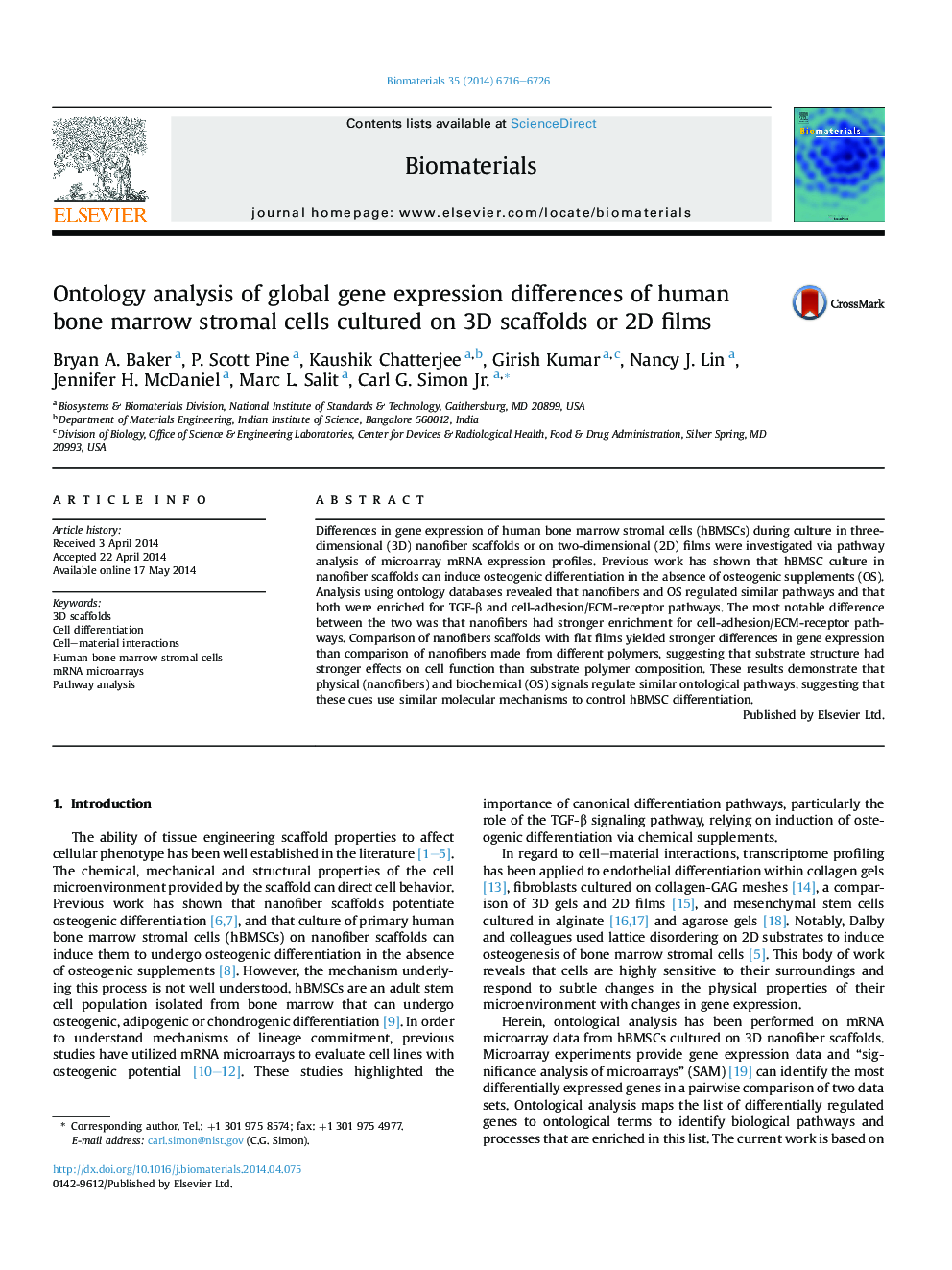| Article ID | Journal | Published Year | Pages | File Type |
|---|---|---|---|---|
| 10227498 | Biomaterials | 2014 | 11 Pages |
Abstract
Differences in gene expression of human bone marrow stromal cells (hBMSCs) during culture in three-dimensional (3D) nanofiber scaffolds or on two-dimensional (2D) films were investigated via pathway analysis of microarray mRNA expression profiles. Previous work has shown that hBMSC culture in nanofiber scaffolds can induce osteogenic differentiation in the absence of osteogenic supplements (OS). Analysis using ontology databases revealed that nanofibers and OS regulated similar pathways and that both were enriched for TGF-β and cell-adhesion/ECM-receptor pathways. The most notable difference between the two was that nanofibers had stronger enrichment for cell-adhesion/ECM-receptor pathways. Comparison of nanofibers scaffolds with flat films yielded stronger differences in gene expression than comparison of nanofibers made from different polymers, suggesting that substrate structure had stronger effects on cell function than substrate polymer composition. These results demonstrate that physical (nanofibers) and biochemical (OS) signals regulate similar ontological pathways, suggesting that these cues use similar molecular mechanisms to control hBMSC differentiation.
Keywords
Related Topics
Physical Sciences and Engineering
Chemical Engineering
Bioengineering
Authors
Bryan A. Baker, P. Scott Pine, Kaushik Chatterjee, Girish Kumar, Nancy J. Lin, Jennifer H. McDaniel, Marc L. Salit, Carl G. Jr.,
